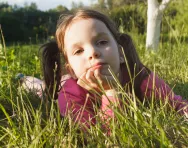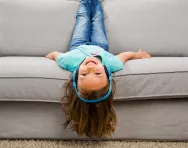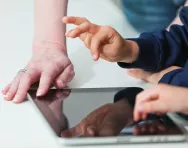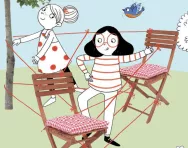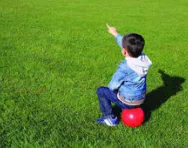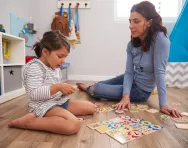TheSchoolRun.com closure date
As we informed you a few months ago, TheSchoolRun has had to make the difficult decision to close due to financial pressures and the company has now ceased trading. We had hoped to keep our content available through a partnership with another educational provider, but this provider has since withdrawn from the agreement.
As a result, we now have to permanently close TheSchoolRun.com. However, to give subscribers time to download any content they’d like to keep, we will keep the website open until 31st July 2025. After this date, the site will be taken down and there will be no further access to any resources. We strongly encourage you to download and save any resources you think you may want to use in the future.
In particular, we suggest downloading:
- Learning packs
- All the worksheets from the 11+ programme, if you are following this with your child
- Complete Learning Journey programmes (the packs below include all 40 worksheets for each programme)
You should already have received 16 primary school eBooks (worth £108.84) to download and keep. If you haven’t received these, please contact us at [email protected] before 31st July 2025, and we will send them to you.
We are very sorry that there is no way to continue offering access to resources and sincerely apologise for the inconvenience caused.
Why play matters to primary school children
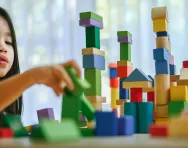
What does playtime look like in your home?
Do you get down on your hands and knees and play Doctors and Nurses with your child? Do they spend hours in their bedroom building Lego models or enacting stories with Playmobil? Or is their playtime mainly on screens?
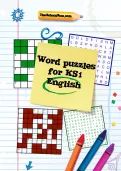

Claim four puzzle packs!
- Word Puzzle Packs
- Numeracy Puzzle Packs
- Challenging and exciting | Boost key skills
Although we might consider some of these types of play more important than others, every one of them has value for your child’s development and wellbeing.
‘Play is the language of children,’ says Joanna Fortune, child and family psychotherapist and author of 15 Minute Parenting.
‘Through play, they deepen their understanding of how the world works, and learn how to engage with and relate to others.’
How children learn through play
Play has the power to support your child’s development in many ways. Amongst other things, it can help them:
- Become better at communicating
- Process the experiences they have during the day
- Think about their feelings and thoughts
- Learn about boundaries
- Develop empathy
- Use critical thinking skills
It also has educational benefits. ‘It’s an enjoyable way to learn academic skills such as counting and reading, as well as teaching a wide range of life skills,’ says play expert Dr Amanda Gummer, founder of the Good Play Guide.
How play changes as children grow
Play is an evolving process, from the baby days of Peekaboo! to online gaming in teens (and beyond!).
‘In early childhood, we see rich imaginative play, where children learn through exploration,’ says Joanna.
‘The emotional part of the brain is developing quickly at this stage, and play is their roadmap.’
As children move into middle childhood (around eight to 12 years old), play patterns usually change.
‘They tend move a little away from imaginative play, and into more structured play, such as scooters, bikes and skateboarding, as well as play with their peers, like football and chasing.’
At this stage, many also get into gaming on digital devices: a trend that generally continues into the teenage years.
‘This is normal, and aligns with their developmental need to pull a little further away from parents and prioritise peer relationships, while grappling with increased independence,’ Joanna explains.
But while the changes in children’s play are partly developmental, peer pressure also has an impact.
‘There’s a lot of pressure on children to grow up quickly, and playing with toys can be seen as something younger children do,’ says Dr Gummer.
‘There’s often a public rejection of toy play as children progress through primary school, but most will still play with toys in private, or with siblings or close friends.’
Learning through play in primary schools
In the Early Years Foundation Stage (EYFS), which includes Nursery and Reception, the Department for Education specifies that learning should be mostly through games and play.
This can happen in a range of ways: role play, water play, sensory play, songs and rhymes, outdoor play, PE, and many, many more.
‘Learning through play is vital, precisely because play is learning,’ says Joanna.
‘It supports their physical, psychological and neurological growth and development.’
As children progress beyond the EYFS into Key Stage 1 (Years 1 and 2), there’s a shift from play-based learning towards more table-top learning.
At this stage, there are set curriculum subjects that must be taught (including English, maths, science, history, geography and RE), a mandatory phonics screening check in Year 1, and optional SATs at the end of Year 2.
While some children thrive on a more formal approach to learning, others understandably struggle with the reduction in play.
‘Children are still developing emotionally, and rely heavily on play as their most effective and meaningful communication tool,’ Joanna explains.
‘At this age, they do better with techniques that focus on “doing,” and this is precisely why play-based learning needs to be extended.’
Into KS2, play in the classroom reduces further, mainly because of the focus on attainment, particularly in the case of SATs, which are used as a measure of schools’ performance.
‘As children grow older, their concentration span lengthens and they’re more able to sit and listen, so I think the reduction of play is largely a classroom management technique that has been used for generations,’ says Dr Gummer.
‘But adopting an ethos of play and prioritising outdoor activities, games-based learning and freedom for children to choose their play activities can be hugely beneficial for the whole school.’
Supporting play at home
Although play is squeezed out of the primary curriculum as children get older, they still benefit enormously from play outside the classroom, and you can support this at home.
The type of play you engage in will depend on your child’s age and stage, but could be anything from board games, Lego and craft to den-building, scavenger hunts and, of course, gaming on devices.
‘It’s important to use both child-led play and child-focused but adult-led play,’ says Joanna. So you could suggest doing a jigsaw together if your child is at a loose end, or let them play freely in their bedroom when they’re in the right frame of mind.
Taking stock of what your child is playing with can also be helpful.
‘Too many toys can actually make it more difficult for children to find something to do, so I rotate toys by moving some into the attic and leaving a lot less stuff lying around,’ Joanna suggests.
‘This makes it easier for children to identify something to play with and rediscover toys they’d forgotten they even had.’
Screen-time is often seen as the enemy of play, but is actually a form of play in itself.
‘Social games and educational apps can be beneficial for children, so rather than demonising screens, help your child to engage positively with them,’ advises Dr Gummer.
‘If they’re allowed a reasonable amount of screen time, they’ll then be more receptive to other play ideas, especially if it means they get time to play with their parents.’
When play doesn’t come naturally
While some parents love playing with their children, others find it more difficult. It may feel unnatural, time-consuming or even boring.
‘We all have the capacity to play and be playful, but for some of us, our play muscles may be a little stiff,’ says Joanna.
‘Starting small and building up is good enough. If you feel you don’t know much about play, rest assured that your child is an expert, and you can do some child-led play where you simply ask if you can join their game and follow their lead.
‘Even if you feel so exhausted you can’t get out of your armchair, you can still play with your child.’
Dr Gummer advises recognising your strengths and using those as you play with your child.
‘It’s not a case of one size fits all,’ she explains. ‘One parent may be really good at reading stories and baking with their child; another may love board games and construction toys; someone else might like getting dressed up and playing pirates, or going on make-believe adventures.
‘While it’s important for your child to have a balanced play diet, you don’t have to be involved in all of it, so find the things you do enjoy and do more of these, while helping your child access other types of play so they’re getting a healthy balance.’
Seven play ideas from The Good Play Guide
1. Water tea party. Use a children’s tea set so your child can pour drinks for their toys. Add food colouring or glitter to the water to make it more fun.
2. Bottle bowling. Arrange 10 empty plastic bottles in a ten-pin bowling formation – add a little sand or coloured water to give them weight. Then challenge your child to a bowling competition.
3. Find the treasure. Choose a small object and hide it somewhere in the room while the other players wait outside. Bring them back in and challenge them to be the first to find the treasure.
4. Coloured rice sensory play. Fill some cups with dry rice and add a different food colouring or paint to each cup. Wait until dry, then let your child play with their hands, funnels, cups and more. Hide coins or plastic animals for them to unearth.
5. The selfie game. Set the photo self-timer on your phone and pass it around the family, each person striking a selfie pose as it comes to them. When the timer stops, the person holding the phone is captured on camera.
6. Bubble painting. Put a squirt of paint and a squirt of washing up liquid in a bowl with a little water. Use a straw to blow bubbles until they’re above the top of the bowl, then rest a piece of paper on top to create a bubble print.
7. Make a music video. Your child/ren can choose outfits, pick a song, learn the lyrics, choreograph a dance and then get you to film their video. You could also film your child doing a news report, or cooking on camera.
The Play At Home Fest is available to watch on demand and is hosting another festival over the August bank holiday.
